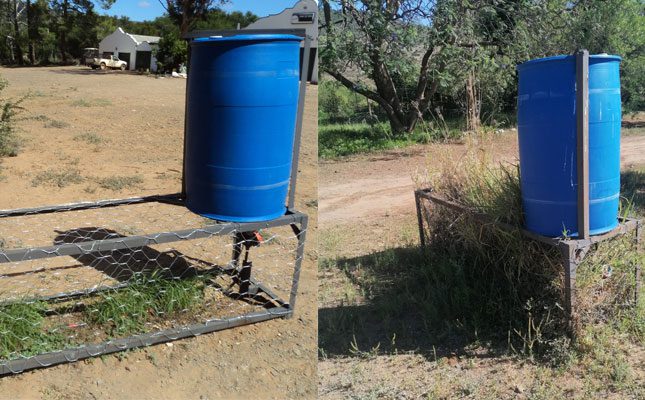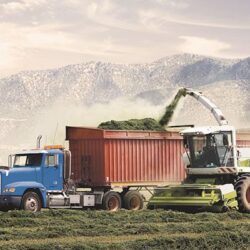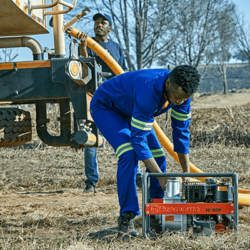Veld recovery in the Karoo is a long process, driven chiefly by rainfall. Dr George Craven believes radical veld improvement can help to speed it up.
“We simply have to think outside the box,” he says. In this case inside a strong steel cage, fitted with a 200ℓ water tank and a drip irrigation timer that he designed and built.
The water is enough to keep the system going for two months. Preferably the bedstead seeder (katelkweker in Afrikaans) should be placed on a spot where there is a bit of water flow during a shower of rain, but not where the seed or young grass can wash away.
Seedbed preparation is minimal – just a few scratches with a stick in the ground.
The photos show how a mixture of blue buffalo grass and knee-grass took off and grew in a year. The cage is moved to a new spot once the grasses have set seed.
The cage can also be used to grow and protect scarce indigenous shrubs and trees that take decades to grow to knee-height, such as shepherd’s bush and jacket plum, from grazing and burrowing animals.
In the veld, these shrubs can become hundreds of years old but, despite setting fruit in abundance, have little chance of being replaced by a new generation as the seedlings are grazed by sheep and goats even before people can notice them. The seeder is also ideal for gardeners who can use it for a variety of purposes.
You can build the seeder for around R2 000. This sounds expensive, but it seems to guarantee results, beating the conventional hit or miss way of sowing seeds. Hand-sown seeds always seem to come up somewhere else, if at all.
With the seeder, you have some control of the environment. You can actually guarantee your plants are going to grow and set seed right where you want them to, in their natural environment.
Helped by a few lucky rainfall years, the seeder has the potential to kick-start the spread of seeds that have become scarce in a grazing camp. It also beats establishing seedlings in pots and then planting them out.
The seeder, of course, is what researchers call an exclosure: the plants inside are not exposed to the grazing or browsing habit of herbivores. Researchers can then see what effect these animals have on surrounding veld by comparing the state of the vegetation inside with that on the outside.
But such exclosures are normally much bigger, fenced off areas that can’t simply be picked up and placed elsewhere.
The Craven feeder can also be enlarged and carry a bigger water tank, at a price.
Phone Dr George Craven on 082 578 5503.




